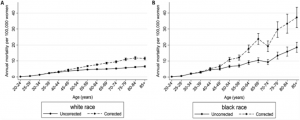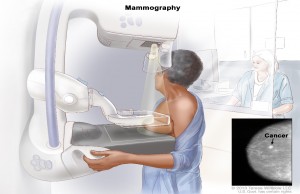Tumor Infiltrating Lymphocytes may be Predictive in African-American Women with Triple-Negative Breast Cancer
By John Schieszer
Shared by Paul Mambwe Chilwesa
High levels of peripheral tumor infiltrating lymphocytes (TILs) may be associated with better prognosis among African-American women with triple-negative breast cancer (TNBC) in the early stages of the disease, according to researchers at Emory University. They reported at the American Association for Cancer Research (AACR) Conference on The Science of Cancer Health Disparities in Racial/Ethnic Minorities and the Medically Underserved in Atlanta that clinicians may want to consider screening some African-American women with breast cancer for levels of TILs.
“Screening early-stage African-American triple-negative breast cancer patients for levels of tumor infiltrating lymphocytes in the clinic may provide a method for oncologists to predict patient prognosis and devise an optimal treatment plan for these patients at risk for poorer outcomes.” said the study’s lead author, Nikita Wright, BS, a PhD candidate at Georgia State University, Atlanta, Georgia.
TNBC is a highly aggressive breast cancer subtype that afflicts African-American women at a higher rate than white women. Wright said it often involves a worse prognosis and previous research has shown that African-American women tend to develop more aggressive subtypes of TNBC than European-American women, exacerbating the disparity in survival.
“There is a great need for robust, clinically translatable prognostic biomarkers and/or new therapeutic targets for triple-negative cancer patients and especially for those of African descent, who display a more aggressive disease course,” Wright told OncoTherapy Network. “Analyzing racial disparities in the tumor micro-immune environment between African-American and European-American triple-negative breast tumors may allow us to harness the potential prognostic utility of tumor infiltrating lymphocytes as well as their value as a treatment target for promising immunotherapeutic agents.”
Wright and colleagues tested resection samples from 142 TNBC patients and compared stromal TILs between patients of African-American and European-American descent. None of the patients had undergone neoadjuvant chemotherapy. The study showed African-American women harbored significantly more overall TILs than European-American patients. Significant differences were also observed among early-stage TNBC patients, but not among late-stage patients. The study showed that high peripheral TILs were associated with better 10-year survival among early-stage African-American TNBC patients after adjusting for age, Nottingham grade, and stage.
A greater presence of overall and peripheral TILs were also associated with a lack of androgen receptor (AR) expression among African-American patients with early-stage TNBC. Wright said the lack of AR reception classifies some TNBC cases as quadruple-negative, and this subtype is more prevalent among African-American compared with European-American TNBC patients. In addition, she said that among African-American patients with early-stage TNBC, high TIL counts were also associated with younger age at diagnosis, increased intramammary lymph node involvement, and increased BRCA1-associated protein and programmed cell death protein 1 expression.
“Adoptive cell therapy with tumor infiltrating lymphocytes are currently being tested in clinical trials as a treatment option for breast cancer patients to shrink breast tumors and have already shown promising results in melanoma patients. If approved, administering immunotherapy with tumor infiltrating lymphocytes to early-stage African-American triple-negative breast cancer patients may improve outcomes in this patient population and attenuate racial disparities in triple-negative breast cancer,” said Wright.
Source: http://www.oncotherapynetwork.com/.
















